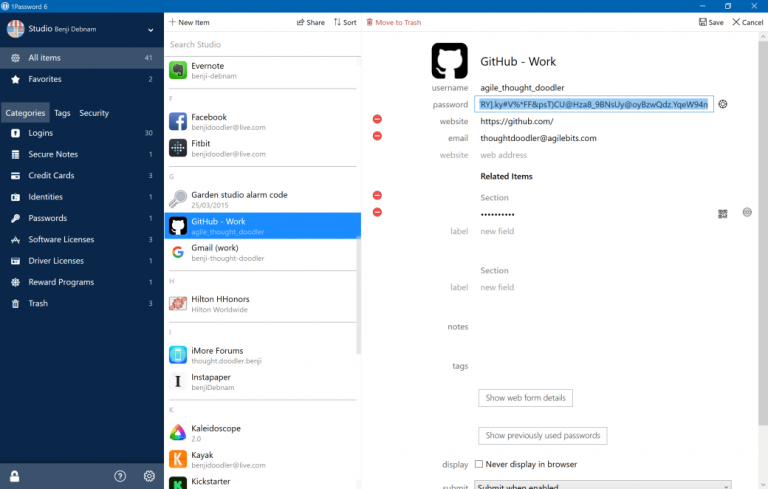

- 1PASSWORD SUGGESTED PASSWORD CODE
- 1PASSWORD SUGGESTED PASSWORD PASSWORD
- 1PASSWORD SUGGESTED PASSWORD OFFLINE
In the context of password storage, encryption should only be used in edge cases where it is necessary to obtain the original plaintext password. Hashing their address would result in a garbled mess. Encryption is appropriate for storing data such as a user's address since this data is displayed in plaintext on the user's profile. Even if an attacker obtains the hashed password, they cannot enter it into an application's password field and log in as the victim.Įncryption is a two-way function, meaning that the original plaintext can be retrieved. Hashing is appropriate for password validation. Hashing is a one-way function (i.e., it is impossible to "decrypt" a hash and obtain the original plaintext value). However, in almost all circumstances, passwords should be hashed, NOT encrypted. Hashing and encryption both provide ways to keep sensitive data safe.

1PASSWORD SUGGESTED PASSWORD OFFLINE
As a defender, it is only possible to slow down offline attacks by selecting hash algorithms that are as resource intensive as possible. The majority of modern languages and frameworks provide built-in functionality to help store passwords safely.Īfter an attacker has acquired stored password hashes, they are always able to brute force hashes offline. It is essential to store passwords in a way that prevents them from being obtained by an attacker even if the application or database is compromised. Password Storage Cheat Sheet ¶ Introduction ¶ This problem has been inherent to Facebook for many months, and many topics about it appear on forums ( Infinite Login Loop).Insecure Direct Object Reference Prevention And incidentally to access Messenger or other services of Facebook/Meta.Īfter 48 hours, an email identification option “magically” appeared, allowing her to regain access to her account. It was therefore impossible for her to reconnect to Facebook (and therefore to manage the Milesopedia Facebook page or group).
1PASSWORD SUGGESTED PASSWORD CODE
Ask 3 friends for a code to access the Facebook account (the problem: Audrey – like most people – had not activated this feature).Acknowledge 3 comments posted in the last few months (this never worked).SMS (we never received the identification text message).Except that when re-logging in with her new ultra secure password, Facebook did not recognize the browser.

But in the process, I made a mistake with Audrey’s Facebook account, which could have been very damaging to us, and I’ll explain why you need to be careful when changing your passwords.īy changing Audrey’s credentials, I also asked Facebook to disconnect her open session on all devices (there were more than a dozen).


 0 kommentar(er)
0 kommentar(er)
